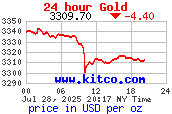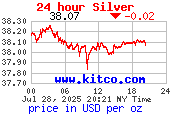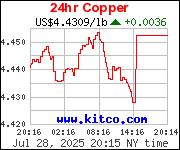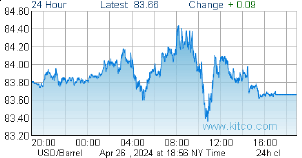3:15 pm Pacific
Gold Bullion Development (GBB, TSX-V) came out with a much anticipated major exploration update shortly after the market close today, jam-packed with juicy geological details that have thrown a whole new light on exactly what might be unfolding in the LONG Bars Zone which has suddenly become more intriguing than ever.
We are still reviewing the release and will go into some more detail in Part 2 of this article tomorrow morning prior to market open. But here are the highlights as we see them so far:
1. Porphyry Potential: The news release doesn’t actually come out and say it (that Granada, or a portion of it, is now determined to be a porphyry deposit) but more and more this deposit is taking on the characteristics of a porphyry-style system which has potentially very significant implications for tonnage. “The geological interpretation of Granada is evolving,” the news release states.
2. Best Result Yet: GR-10-53 (68.3 metres grading 2.16 g/t Au within 100.5 metres of 1.34 g/t Au) is an outstanding drill result by any measure and the best yet at Granada. Drilled perpendicular to Vein #2 within the Preliminary Block Model and believed to closely represent true width;
3. Extension of Vein #2: Buried in the news release is a VERY significant development: It appears Gold Bullion has hit an “extension” to this higher grade structure on a 250-metre step-out from the Preliminary Block Model to the east-southeast. GR-10-86, with assays pending, has hit visible gold at two different depths – in a quartz vein and also in feldspar porphyry – and strong alteration zones. GR-10-86 is the southernmost hole drilled to date at Granada – a very pleasant surprise that the south is also now showing excellent promise. Will be interesting to see the assay results on this hole – a section of the core posted on the web site looks VERY nice;
4. Northern Half Preliminary Block Model Potential: Very interesting information here as we learn that “large porphyry intrusions” cover much of the northern part of the 34,000 square metre waste pile and northeasterly trending fault structures are interpreted to run through the waste pile. “Waste” from previous mining operations, which sampled well for gold, was dumped on a highly prospective geological area, preventing any drilling until the rock was removed (Gold Bullion is now in the process of removing all of this rock). A section east of the waste pile – we’ll call it the “northern quarter” – is looking very promising with one hole out of 15 reported so far (GR-10-47, 1.68 g/t Au over 28 metres within a wider envelope of mineable grade);
5. The Growing Eastern Extension: It seems highly probable in our view that at least some spectacular results are yet to come from the Eastern Extension (an area of “extreme” interest). The surface area of the Eastern Extension is now essentially the same as the Preliminary Block Model (a little more north-south than the Block Model). A handful of assays from early drilling in the East are in and a couple are good (GR-10-42 and GR-10-44), but it appears the best holes are yet to come. The following paragraph is of major importance:
“GENIVAR reports that visible gold and disseminated sulphides, along with large alteration zones, have been observed within the porphyry in numerous holes drilled since July in all directions (north, south, east and west) surrounding Phase 1 discovery hole GR-10-17. Assay results are still pending for these holes where mineralization was encountered near-surface and at depth. The fact that feldspar porphyry is hosting gold is an interesting development historically for Granada as a 2006 Technical Report on the Property stated that all economic mineralization at Granada was related to quartz veining.”
Other notes:
Mineralization remains open in all directions at Granada;
Higher grade gold potential in areas close to northeasterly trending faults – these Granada secondary fault structures, spatially related to the Cadillac Fault that runs through the northern portion of the property, are prime target areas for high or higher grades;
GBB has contracted a third assay lab (Chemex out of Val d’Or) to “expedite the delivery of additional results”;
There’s also an interesting paragraph near the end of the news release that states that Gold Bullion is in possession of a Testwork Study Report from Gekko Systems Ltd. of Victoria, Australia, regarding extensive metallurgical testing on Granada ore samples taken from the LONG Bars Zone Eastern Extension last May. Results will be reported shortly. Gold Bullion surprised us Tuesday with the Baseline Environmental Study, and now we learn they’ve already been working on the best and most efficient way to process Granada ore. This company is thinking production and lots of it.
Gold Bullion and GENIVAR have more than satisified our appetitie for more geological facts pertaining to the LONG Bars Zone which in our view now has even greater potential as the newest major open-pit deposit along the Cadillac Trend. More in part 2 of this article tomorrow morning as we study today’s new information in more detail.
 BullMarketRun.ca
BullMarketRun.ca








Great stuff. All looking good for a SERIOUS deposit. It seems Frank is keen to mine this baby himself and is not interested in being taken over. Suits me..the man is a genius.
Comment by patrick — September 10, 2010 @ 12:41 am